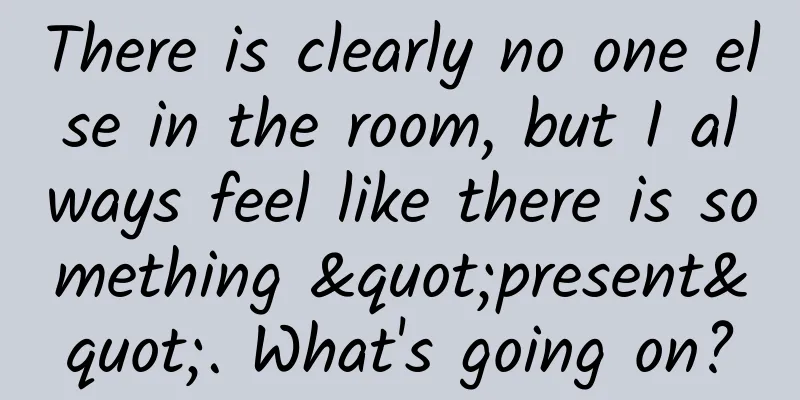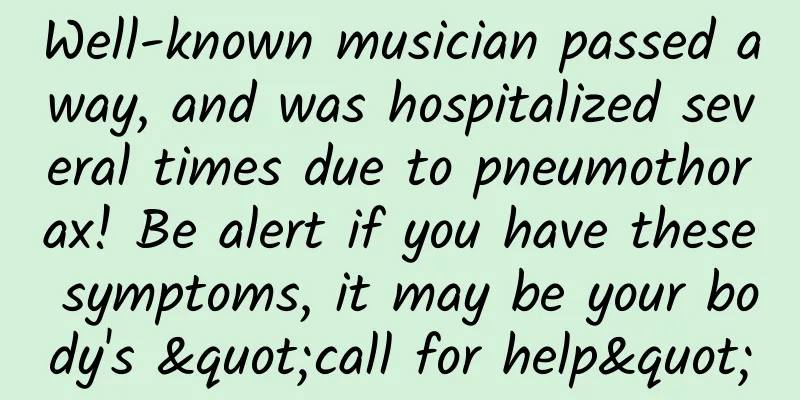There is clearly no one else in the room, but I always feel like there is something "present". What's going on?

|
Have you ever had this experience: just woke up from a dream, but found that the whole body can't move, can't speak, and even see some weird hallucinations? This is the legendary "ghost pressing on the bed" - a strange phenomenon that occurs when falling asleep or dreaming: the consciousness is awake, but the body can't move. This phenomenon is scientifically called "Sleep Paralysis". Copyright images in the gallery. Reprinting and using them may lead to copyright disputes. However, what is truly chilling is often not the paralysis of the body, but the perception of something "other" in this state - a creepy sense of oppression, as if some invisible presence is in the same room with you. Is there really a "ghost"? What are sleep hallucinations? This disturbing "presence" is not some supernatural force, but a little "joke" played by the brain on us. This is due to a small error in the "handover" between the brain and the body during sleep, which leads to us experiencing "sleep hallucinations". Sleep hallucinations are a very real sensory experience that occurs when you are about to fall asleep or just wake up from sleep. It may involve vision, hearing, touch, and even other senses, and it is often difficult to distinguish between true and false. Depending on when they occur, sleep hallucinations can be divided into two types: Hypnagogic Hallucinations This hallucination occurs when we are gradually transitioning from wakefulness to sleep, that is, just before we fall asleep. In this process, the brain does not switch instantly like turning off the main switch, but more like a building gradually turning off the lights: turning off the lights room by room, clearing the floor by floor, and gradually shutting down different functions. Therefore, this "lights-off" process is not completely synchronized - some areas have "turned off" and entered a resting state, while other areas are still actively working. This "asynchrony" occasionally leads to a kind of "overlap": fragments of dreams or sensory experiences are intertwined with reality, resulting in strange feelings or hallucinations. For example, you may "see" blurry images, hear vague sounds, or even feel someone approaching you. These hallucinations are very real, like a kind of "advanced" dream. It is somewhat similar to the "hypnosis" often mentioned on the Internet, but more vivid and realistic. Hypnopompic Hallucinations This hallucination occurs during the transition from sleep to wakefulness and often occurs at the same time as sleep paralysis, when one part of the brain has awakened while another part is still in an active dream state. Copyright images in the gallery. Reprinting and using them may lead to copyright disputes. As a result, you may hear strange sounds, see blurry figures, or even feel a sense of oppression, as if some "existence" is watching you. This perception makes people feel scared, but it is actually just caused by a temporary "confusion" of the brain. Why do sleep hallucinations occur? Because the brain loves to "make up stories". It feels like there is something "there" even though there is no one else in the room. This phenomenon is indeed creepy, but there is actually a scientific explanation behind it. When we are about to fall asleep but not completely asleep, our bodies have begun to relax, but our consciousness remains awake . This state of "relaxed body but not shut down consciousness" may cause the brain to produce a phenomenon called "sense of presence illusion", feeling that there seems to be some threat or "unknown existence" around. Therefore, you may feel pressure on your chest, someone is watching you, or even feel that something strange is lurking nearby. Copyright images in the gallery. Reprinting and using them may lead to copyright disputes. Through research, scientists have discovered that this "illusion of existence" is related to sensory confusion in the brain. A famous experiment simulated a similar experience using a robotic arm. When you scratch your back with your hand, your brain predicts the result of the touch in advance, and even if you can't see the action, you will know that "it's you who is scratching your back." However, if the timing or location of the touch does not match expectations, such as the hand has scratched, but the feeling on the back has not appeared, or the feeling appears in the wrong place (such as on the leg), the brain will be confused. In order to "explain" this inconsistency, the brain may "make up a story" that it is not caused by itself, but comes from some "external force" or "existence." In addition, before falling asleep, the brain gradually reduces its response to external sensory input, but at the same time begins to process internal information, such as early fragments of dreams or activation of memories. Therefore, some scientists believe that "hallucinations before falling asleep" are actually "trailers" or "simplified versions" of dreams. At this time, the brain may mistake the blurred images or sounds generated internally for real external stimuli, thereby further strengthening the "illusion of presence", making the hallucinations more real or even terrifying. A similar principle applies to the state of half-awake and half-asleep. When the brain is not fully awake, its ability to process external sounds, touch or light is relatively weak, but the content of the dream may continue to "play". In this case, the brain may mix the content of the dream with the external sensory input, causing you to see, hear or feel something that does not actually exist. This is the source of "hallucinations". How to deal with it? Sleep hallucinations are a normal phenomenon that occurs when the brain switches between wakefulness and sleep, and most people may have experienced it. It is not terrible, nor does it mean that there is something wrong with the body . Occasional sleep hallucinations usually do not require special treatment. As long as you adjust your lifestyle habits, you can reduce the frequency and intensity of its occurrence. Maintain a regular schedule : set regular bedtimes and wake-up times to ensure adequate sleep and reduce nighttime interruptions. Learn to relax and relieve stress : Stress and anxiety can make the brain "too tense". You can try deep breathing, meditation, or listening to some soothing music before going to bed, and create a comfortable sleeping environment. Avoid stimulating activities before going to bed : Stimulating activities before going to bed will make the brain "too awake". Do not look at your phone or computer for a long time, do not watch horror movies or other stimulating content, etc. Pay attention to medication and diet : Certain medications or substances may change the balance of neurotransmitters in the brain. Use medications with caution and try to avoid caffeine and alcohol. Face sleep hallucinations rationally : When sleep hallucinations occur, do not be afraid or over-associate, do not be superstitious or make random interpretations. If necessary, seek professional help Sleep hallucinations are actually not that scary. Understand it and deal with it. I hope everyone can have a good sleep. References [1] Michael Gazzaniga. (2022). Consciousness Instinct. Zhejiang Education Publishing House. ISBN: 9787572234743 [2]https://neurosciencenews.com/alone-presence-psychology-22970/ [3]https://neurosciencenews.com/alone-presence-psychology-22970/ [4]https://pubmed.ncbi.nlm.nih.gov/25447995/ [5]Hobson, JA (2002). Dreaming: An Introduction to the Science of Sleep. Oxford University Press. [6]Waters, F., Blom, JD, Jardri, R., Hugdahl, K., & Sommer, IE (2018). "Auditory hallucinations, not necessarily a hallmark of psychotic disorder" : Psychological Medicine, 48(4), 529–536. [7]American Psychiatric Association. (2013). Diagnostic and Statistical Manual of Mental Disorders (DSM-5). Planning and production Author: Su Jing, National Level 2 Psychological Counselor Reviewer: Fan Chunlei, Associate Researcher, Institute of Psychology, Chinese Academy of Sciences Planning丨Fu Sijia Editor: Fu Sijia Proofread by Xu Lai and Lin Lin The cover image and the images in this article are from the copyright library Reprinting may lead to copyright disputes |
<<: Many tourists fell in Lushan! @“Climbing Spring Mountain” for you: Safety tips you must know →
Recommend
Solid info! Information flow advertising optimization guide applicable to the entire industry!
A few days ago, I received messages from many fri...
The first lesson of money freedom: the "wallet" money management system
Is it difficult to make money? Saving money is ev...
51CTO Academy and Xingyu Spacetime have reached a strategic cooperation in VR online education - VR training courses will be launched
Pictured from left to right: Chen Bo, Vice Presid...
Bidding promotion: How do bidders optimize the average price of keywords?
Here, the editor has compiled a wave of common bi...
10 ways to master content marketing, get them now!
I once saw an interesting saying: All the ways to...
What is a supernova explosion? How terrifying is it?
People who don't know astronomy may not know ...
How much does it cost to customize a beauty mini app in Shenzhen?
Shenzhen beauty mini program customization price ...
How to prevent posting on Tieba from being deleted (Tips on preventing posting in batches from being deleted on Tieba)
Now, posting in batches on Tieba requires a chang...
Why do biscuits become softer and bread become harder as time goes by?
Friends who like to stock up on snacks, have you ...
These processes of Apple cannot be copied
[[123145]] "The last thing I want to say abo...
Why does ofo invest in advertising while Mobike does public relations?
To date, ofo and Mobike have been fighting for ne...
Li Xingxing's PR video editing cheats + PR editing score strategy
Li Xingxing's PR video editing cheats + PR ed...
What is the essential difference between Android main thread crash and child thread crash? How do you deal with it?
[[358857]] Question and Answer Session Q: What is...
A must-know method for user growth: retention curve
The editor’s previous article "Growth Strate...
"See through" the brain! Chinese scientists "new" super microscope
Author: Shi Xiangqi and Li Chuanfu Imagine that w...


![Chengdu Tea Tasting Studio, the best place to experience tea tasting [Recommended]](/upload/images/67cc0efd7b36b.webp)






